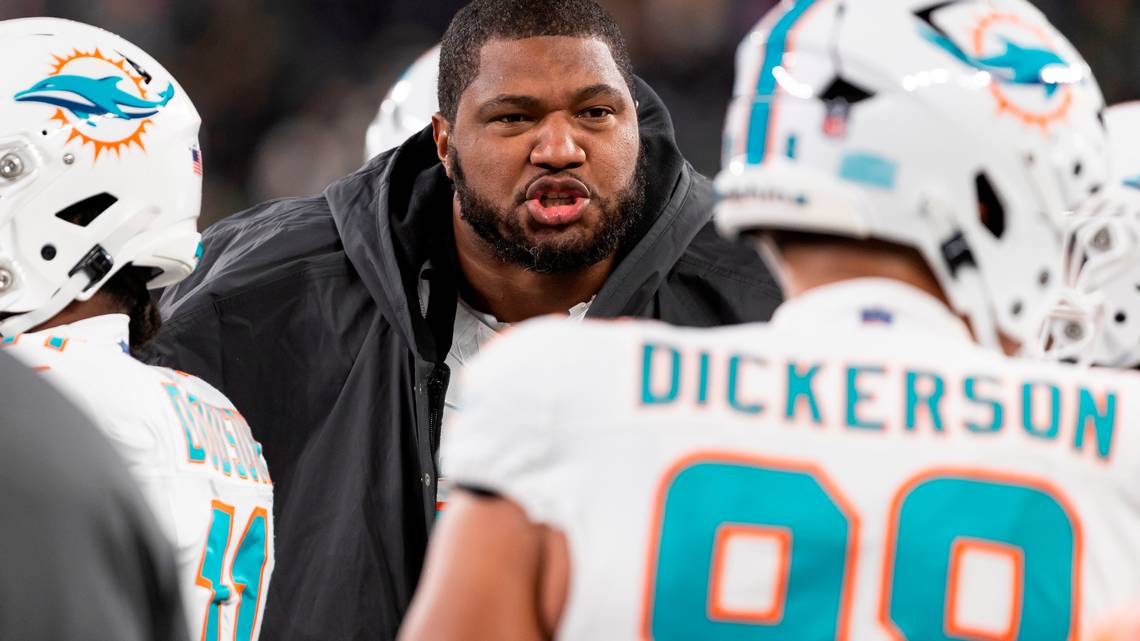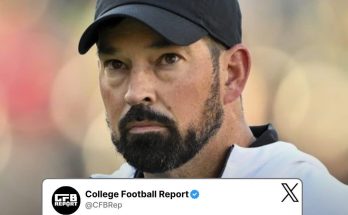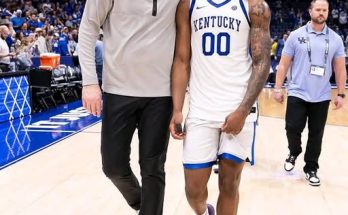The Miami Dolphins have made a significant move this offseason by signing two new safeties, Ashtyn Davis and Ifeatu Melifonwu, to bolster their secondary. This move is critical for the team as it looks to improve its defense and solidify its roster for the 2025 season. Both players bring unique skills to the table, and their additions highlight the Dolphins’ intent to build a stronger defense that can help the team compete at the highest level in the NFL.
The State of the Dolphins’ Secondary: A Need for Improvement
Over the past few seasons, the Dolphins’ defense has shown flashes of brilliance but has also been inconsistent, particularly in the secondary. Miami has a talented group of cornerbacks, including Xavien Howard and Jalen Ramsey, who are capable of locking down opposing wide receivers. However, the safety position has remained a bit more unstable.
The Dolphins’ safety group was often seen as a weak link in their defensive backfield, and despite having some solid contributors like Jevon Holland, there was a lack of depth behind him. Whether it was missed tackles, blown coverages, or failure to provide adequate support in pass defense, the safeties struggled to meet expectations. As a result, the Dolphins decided to address this issue by bringing in Ashtyn Davis and Ifeatu Melifonwu, two players who will provide depth, competition, and potentially new solutions for the secondary.
Ashtyn Davis: A Versatile Safety with Speed and Range
Ashtyn Davis, who was drafted by the New York Jets in the third round of the 2020 NFL Draft, is known for his speed, range, and versatility in the secondary. During his time with the Jets, Davis flashed the athleticism that made him a highly sought-after prospect out of the University of California, Berkeley, where he played free safety. Davis possesses exceptional speed, clocking in at 4.39 seconds in the 40-yard dash at the 2020 NFL Scouting Combine, which allows him to cover a lot of ground and be an asset both in deep coverage and in run support.
Strengths and Skills:
- Speed and Range: One of Davis’ most significant assets is his speed. His quickness allows him to cover ground quickly, which is vital in today’s NFL where passing offenses are faster and more dynamic than ever before. Davis can make plays all over the field, from deep coverage to coming down and making stops near the line of scrimmage.
- Versatility: Davis is a player who can play both as a free safety and a strong safety, giving the Dolphins flexibility in their defensive schemes. His ability to move around the secondary and provide coverage against tight ends, wide receivers, and running backs is valuable.
- Athleticism: In addition to his speed, Davis has excellent agility and fluidity, which allows him to break on the ball quickly and make plays on it. This makes him a threat in both man-to-man and zone coverage. His athleticism also helps him support the run, filling in as an extra defender in the box when needed.
- Ball Skills: While Davis’ interception numbers in the NFL have not been overwhelming (he has just one interception in his first three seasons), his ability to track the ball and put himself in position to make plays is encouraging. If he can develop his ball skills and capitalize on opportunities, he could become a turnover machine for the Dolphins.
Weaknesses:
- Tackling Consistency: Davis has struggled at times with tackling in the open field, which is a critical part of a safety’s job. In the NFL, safeties are often called upon to make tackles on running backs or wide receivers in space, and Davis’ inconsistent tackling could be a liability if not addressed.
- Coverage Reliability: While Davis has the speed to cover a lot of ground, he sometimes struggles with positioning and reading the quarterback’s eyes. He has been caught out of position on occasion, which has led to blown coverages and big plays. Improving his understanding of offensive schemes and working on his ability to anticipate throws will be essential for his success with the Dolphins.
How He Fits with the Dolphins:
Ashtyn Davis brings much-needed athleticism and speed to the Dolphins’ secondary. His versatility will allow defensive coordinator Vic Fangio to experiment with different looks and defensive packages, especially in the deep parts of the field. With Jevon Holland already an established safety, Davis could either compete for the starting free safety role or serve as a valuable backup, offering depth in case of injury. Davis’ ability to cover a lot of ground would allow the Dolphins to be more aggressive in their pass rush, knowing that Davis has the speed to recover if a play breaks down.
While Davis may not be a top-tier safety in terms of experience or past performance, he brings the type of athletic upside that the Dolphins need to take their defense to the next level. He could be a key developmental player for the team, especially under the guidance of Fangio, one of the best defensive minds in the NFL.
Ifeatu Melifonwu: A Physical Safety with Potential
Ifeatu Melifonwu, a former second-round pick of the Detroit Lions in the 2021 NFL Draft, is another intriguing addition to the Dolphins’ secondary. Known for his size, length, and athleticism, Melifonwu has all the physical tools to be a standout player at the safety position. At 6’3” and 205 pounds, Melifonwu possesses a unique combination of size and speed that allows him to match up with bigger receivers and tight ends, making him a physical presence in the secondary.
Strengths and Skills:
- Size and Physicality: Melifonwu’s 6’3” frame gives him an advantage when covering bigger targets like tight ends and larger wide receivers. His physicality allows him to match up well against these types of players in both man-to-man coverage and in contested situations.
- Athleticism: Like Davis, Melifonwu is an outstanding athlete. His ability to move fluidly for his size allows him to play both safety positions and cover a wide range of routes. His ability to come downhill and support the run makes him a valuable asset in a more aggressive defensive scheme.
- Ball Skills: Melifonwu showed his ability to make plays on the ball during his college career at the University of Connecticut, where he had several interceptions and pass breakups. While he has not yet fully transitioned those ball skills into the NFL, he has the potential to be a ball hawk with more development.
- Matchup Ability: His combination of size, speed, and agility makes him an excellent option for covering tight ends, running backs, and even some of the larger wide receivers in the league. This gives the Dolphins flexibility to use him in a variety of coverage situations, especially against mismatches in the passing game.
Weaknesses:
- Inconsistent Play Recognition: Melifonwu has shown occasional struggles in reading the quarterback’s eyes and reacting to plays quickly. This has led to missed opportunities in both pass coverage and run support. Improving his football IQ and ability to read plays as they develop will be crucial to his success.
- Tackling Issues: While Melifonwu is an aggressive player, he sometimes overcommits on tackles, leaving himself out of position. He’ll need to refine his tackling technique to ensure that he can consistently make stops without allowing big gains.
- Lack of Experience: While Melifonwu has shown promise, his lack of experience at the professional level may limit his immediate impact. He has the tools to be an excellent safety, but it will take time to refine his skills and adjust to the speed of the NFL.
How He Fits with the Dolphins:
Melifonwu’s size and athleticism make him a compelling addition to the Dolphins’ secondary, especially in situations where the defense needs to match up with big, physical receivers or tight ends. His ability to be physical in both coverage and run support gives the Dolphins options when facing power-based offenses or teams that like to spread the ball out in the passing game.
With Jevon Holland already an established playmaker, Melifonwu could compete for the starting strong safety role or serve as a key rotational player. If he can develop his football IQ and improve his recognition skills, he has the potential to be a starter in the near future. His versatility in the secondary could also allow the Dolphins to use him in a variety of roles, giving defensive coordinator Vic Fangio more options when creating matchups for opposing offenses.
How Davis and Melifonwu Strengthen the Dolphins’ Defense
The additions of Ashtyn Davis and Ifeatu Melifonwu should significantly strengthen the Miami Dolphins’ defense. These two players bring athleticism, versatility, and physicality to the safety positions, giving the team more flexibility in how it can defend against both the pass and the run. The Dolphins’ defense, under the direction of Vic Fangio, will benefit from the increased depth and competition at the safety position.
With Jevon Holland already in place as the anchor of the secondary, the Dolphins have now added two young players who could eventually push for starting roles. This gives Miami the ability to rotate safeties in and out of the lineup, keeping players fresh throughout the course of the season. Additionally, the competition between Davis, Melifonwu, and other players on the roster will only push everyone to perform at a higher level.
Both Davis and Melifonwu also bring the ability to play multiple roles in the secondary, providing the Dolphins with more schematic flexibility. Whether it’s playing deep coverage, providing run support, or matching up with tight ends in the passing game, both players offer Fangio more options when tailoring the defense to different offensive styles.



